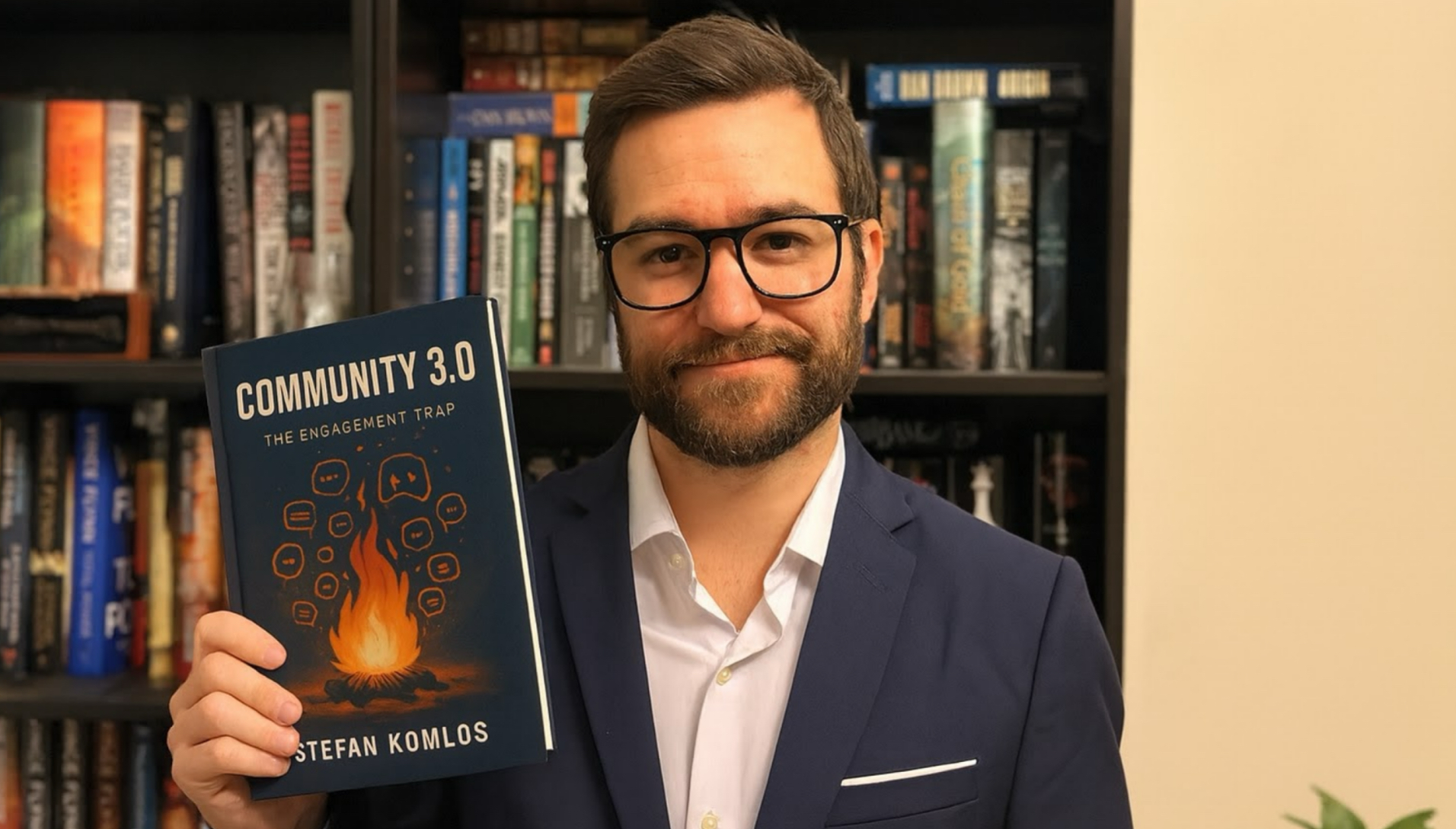For fifteen years, Stefan Komlos has been in the trenches of the gaming industry, shaping the strategies that bring players together in worlds that transcend pixels. From writing blogs and moderating forums for beloved RPGs and MMOs, to guiding community strategy for AAA blockbusters played by millions, Komlos has lived the full arc of what “community” means in the digital age.
But today, he believes the industry has lost its way.
“We fell into the Engagement Trap, chasing concurrent player counts instead of fostering lasting friendships. We built audiences, not communities,” Komlos warns.
That idea, what he calls The Engagement Trap, has become the centerpiece of his philosophy, and the foundation for his revolutionary framework: Community 3.0.
From Community Manager to Community Architect
Komlos’ journey began as many in gaming do: one post at a time. As a Community Manager, he spent his early years talking directly with players, writing blog updates, and building fanbases from scratch.
Those roots gave him a rare vantage point. He understood players’ frustrations, their loyalty, and most importantly, their longing for connection. That experience fueled his rise to senior roles, where he became responsible for global community strategies working on major FPS franchises, large-scale influencer campaigns, and ecosystem design that connected millions of players.
In his most recent chapter, Komlos has led at the strategic level, mentoring teams of community managers and creatives, while ensuring player voices influenced high-level decisions.
“I’ve worn every hat this role has to offer,” he explains. “Listener, problem-solver, strategist, leader. I’ve watched players rally in moments of triumph, and I’ve seen them walk away when their voices went unheard. That journey made something clear: communities deserve better, and I wasn’t willing to wait around for change — I had to push for it myself.”
The Engagement Trap
The brokenness Komlos describes is what he terms The Engagement Trap. In his view, the industry has become addicted to vanity metrics, likes, shares, concurrent players that look impressive on spreadsheets but fail to measure what truly matters, whether players feel they belong.
He watched teams: talented, hardworking teams that get pulled toward pleasing metrics instead of people. “Success,” he says, “was defined by numbers in a boardroom while the real heartbeat of the community is the players themselves, who were ignored.”
That realization became the spark for his new model.
Introducing Community 3.0
Komlos’s answer is Community 3.0, a framework he believes will define the next era of digital connection.
At its core, Community 3.0 is about moving away from audience-building and toward relationship density, creating more connections between players themselves, not just between players and brands.
Some of his key principles include:
- A community is not an audience. An audience pays attention to you; a community pays attention to each other.
- Player trust is the single most valuable asset a game studio can possess.
- Loneliness is the real risk. Competing titles and bad reviews matter less than whether players feel isolated.
- The goal of Community 2.0 was growth; the goal of Community 3.0 is belonging.
Or as Komlos phrases it: “Your job is not to sell them a game; it’s to invite them into a world they can help build.”
The Book That Could Change the Industry
In 2025, Komlos will release Community 3.0: The End of the Engagement Trap, his first book and what he hopes will become the definitive guide for community professionals, marketers, and studio leaders alike. The first chapter is already available on his website, giving readers an early glimpse into the framework.
With its blend of theory and hard-won practical insight, the book aims to serve as both a diagnosis and a roadmap, identifying the systemic flaws in how the industry measures “success,” while laying out tools for building healthier, more resilient, and more profitable communities.
Why He Stands Apart
Unlike many thought leaders, Komlos doesn’t speak from theory alone. His authority comes from living the community journey at every scale:
- The solo manager, moderating forums and building fanbases from scratch.
- The strategist, guiding the community for franchises with millions of players.
- The leader, mentoring teams, and influencing studio strategy at the top level.
This comprehensive arc, he believes, is what sets him apart. “I know what it’s like to fight for players in a boardroom, because I was once the one fighting for players on a message board,” he says.
A Vision for the Future
Komlos’ vision is bold: a digital world where “community health” replaces engagement as the new ROI. Instead of chasing fleeting spikes on launch day, he imagines studios and investors valuing a Player Health Score, a metric based on trust, density of connections, and positive sentiment.
In that world, community isn’t a marketing channel, it’s the core of the product itself.
“A resilient, high-trust community will become your greatest allies, your most passionate defenders, and your partners in weathering the storm,” Komlos insists.
The Shared Purpose Principle
Perhaps the most important lesson Komlos wants to leave the industry with is this:
“A shared interest gets people in the door. A shared purpose makes them stay.”
For him, this is the ultimate calling of community professionals and not just to host activities or manage platforms, but to identify and nurture the deeper “why” that turns a player base into a digital home.
Beyond the Engagement Trap
As Community 3.0 nears its release, one thing is clear: Stefan Komlos isn’t just describing the problem, he’s offering a blueprint out of it. His work challenges an industry hooked on metrics to rediscover its heart: people.
And in doing so, he might just redefine what it means to belong in the digital age.

































